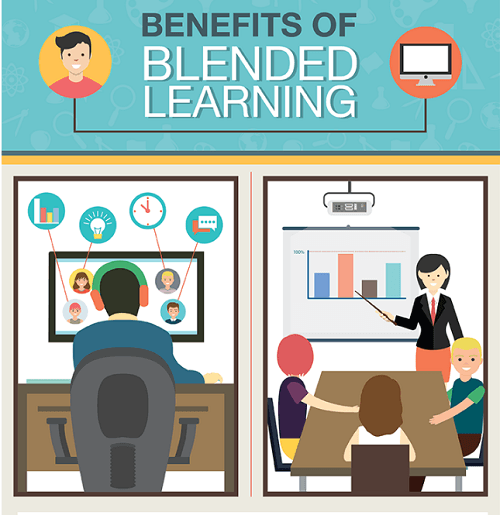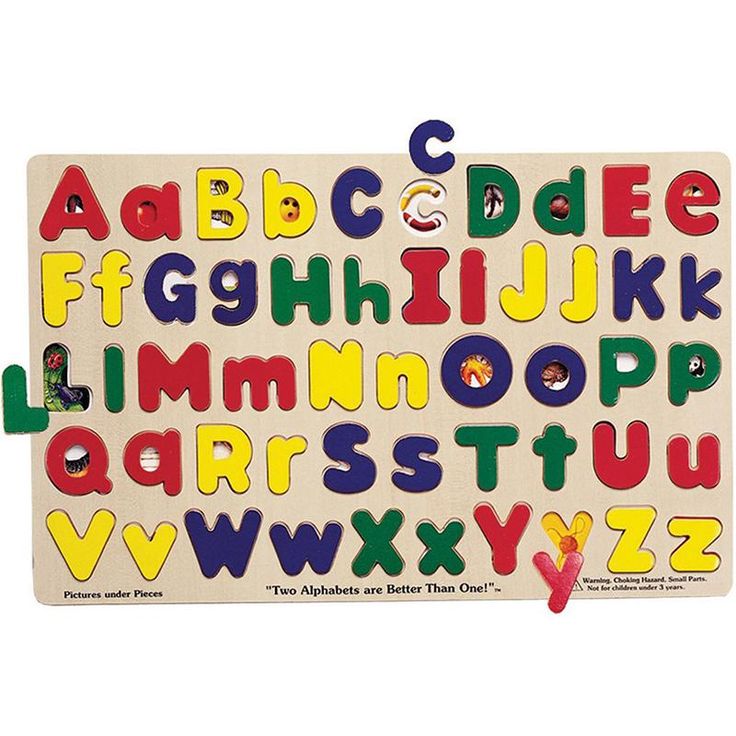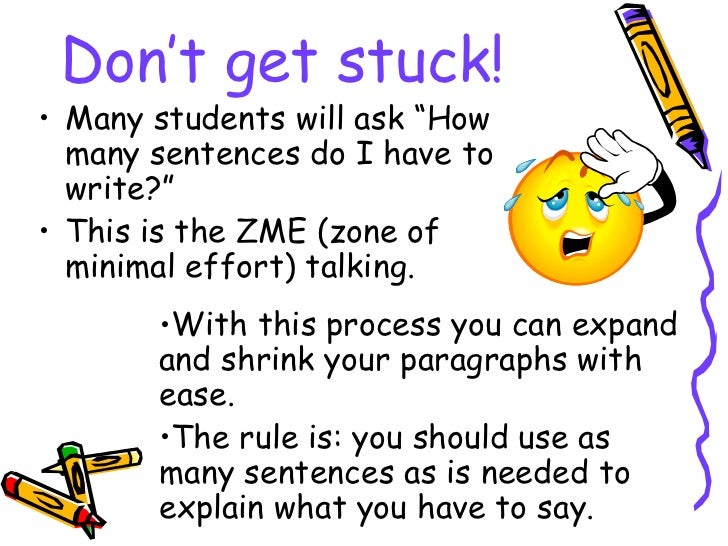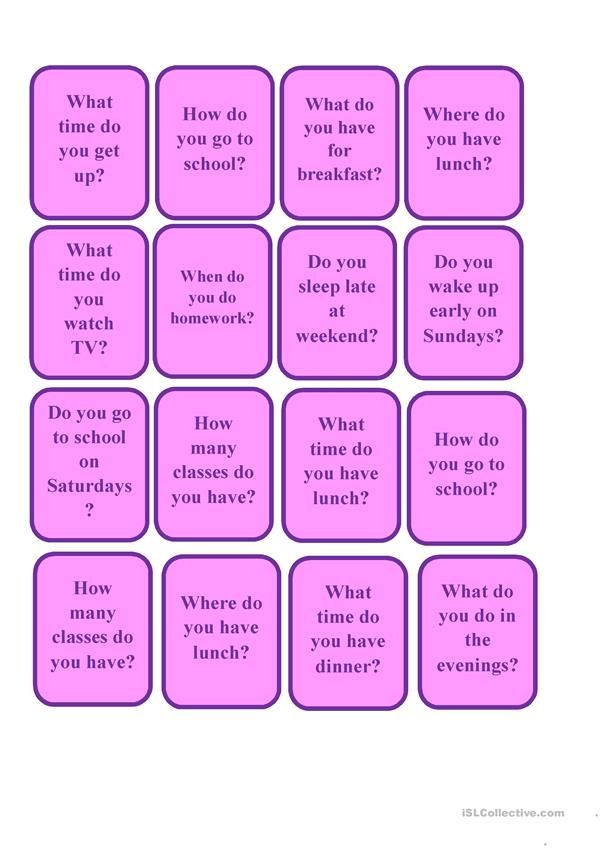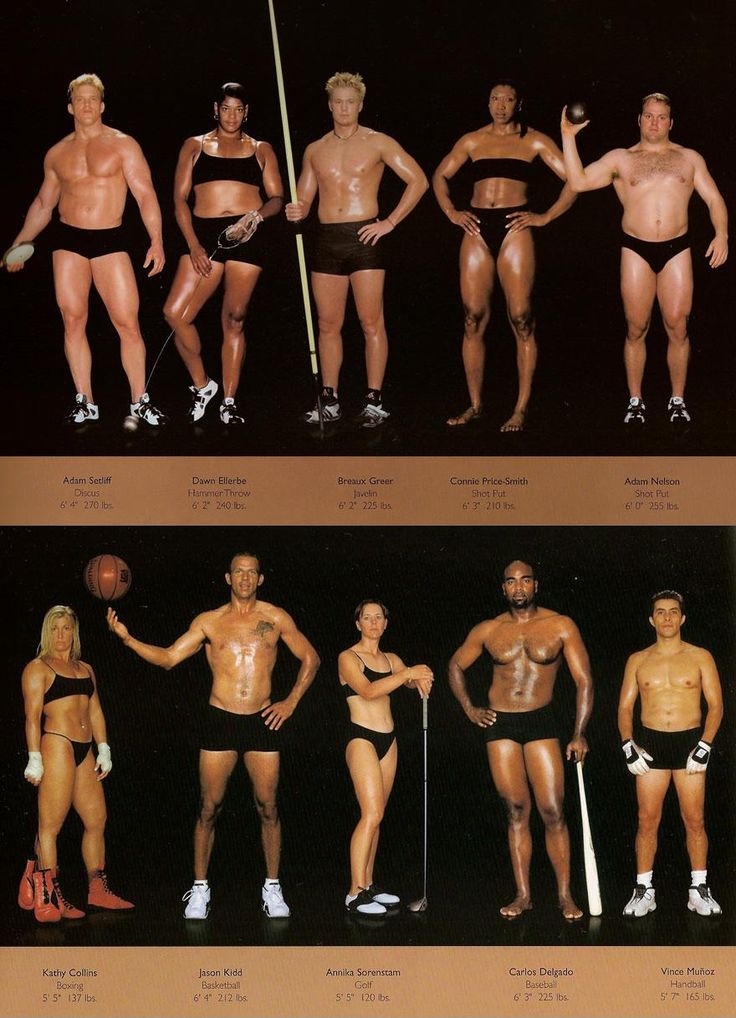Why blended learning
Blended Learning Defined and The Benefits of Using it
Customize student workloads, meet diverse learning abilities, and support students at home or in the classroom: these are just a few of the things that a blended learning approach enables you to accomplish. As a teacher, you must effectively address a range of learning styles in a variety of settings and situations. Blended learning can help personalize education for each of the unique students you teach, while making lessons more effective.
If you’re like most teachers, your students are already doing some form of blended learning (for example, by using a computer to complete an assignment), so they’ve already been introduced to the concept of blended learning. Many of your students are probably also familiar with tablets, smartphones, and other forms of technology, which they may be using for non-school purposes. By bringing these tools into an educational setting (whether in the classroom, a
hybrid setting, or distance learning) it’s possible these students can learn even more effectively.
Blended learning solutions created by Learning A-Z deliver digital and mobile resources that are also printable and projectable, all designed to make differentiated instruction easier than ever.
What Is Blended Learning?
Blended learning is an educational methodology that blends online or digital components with face-to-face instruction. Including technology in education helps set students up for success later in life, because computers and other connected devices are so integral to communication and business today. When students learn in a blended learning setting, they do more than master the subject they’re learning; they also master the use of technology.
In-person instruction from a teacher is essential to the blended learning approach. Developing listening skills in addition to visual and kinesthetic skills is important for student development.
What Is the Purpose of Blended Learning?
By making in-person and
online learning complementary, blended learning creates a truly integrated classroom where the needs of all types of learners can be met.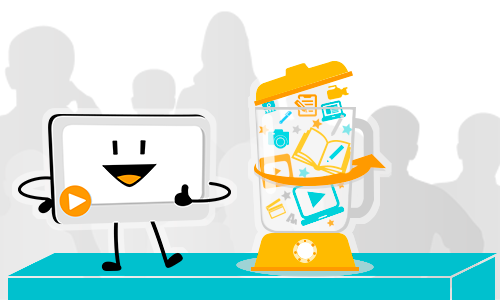 Keeping students engaged, stimulated, and motivated also helps teachers to be more effective and make greater gains with their students.
Keeping students engaged, stimulated, and motivated also helps teachers to be more effective and make greater gains with their students.
Allowing learners of all abilities the opportunity to advance their studies at the rate that works for them, blended learning enables fast learners to advance more quickly, while struggling students can move at their own pace and get customized support where they’re stuck. In a traditional classroom learning environment where all students are trained at the same level and speed, gifted students can easily get bored and students who need extra help can be left behind. Because blended learning is scalable, instruction remains effective every step of the way, setting all your students up for success as they acquire the 21st century skills they need to shine.
With
digitally delivered resources from Learning A-Z, students can access an enormous library of developmentally appropriate learning materials anywhere they have an internet connection or access to a mobile device.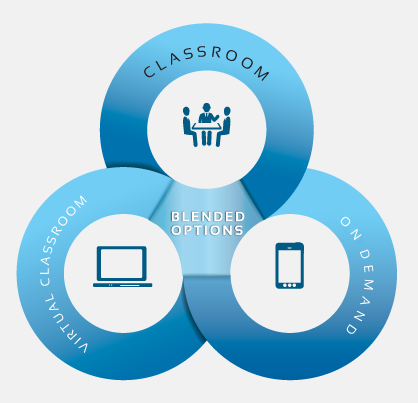 That means students can keep learning on school vacation, on weekends, wherever they are, as much as they want. Caregivers can help their children learn at home, too.
That means students can keep learning on school vacation, on weekends, wherever they are, as much as they want. Caregivers can help their children learn at home, too.
What Are the Different Types of Blended Learning?
You can practice blended learning in an infinite number of ways! The options are endless. You know your students best, so you can customize the content, technology, and instruction methods you use based on what’s best for each of your students. You can introduce new methods, try different blended learning styles, and tweak how you’re using blended learning to continually make education more effective for your students.
Here are few blended learning tools to start building your toolbox:
- Assign online coursework and have students complete and submit their assignments online, all based on your in-person instruction.
- Utilize learning management systems that students and teachers can easily access anytime.
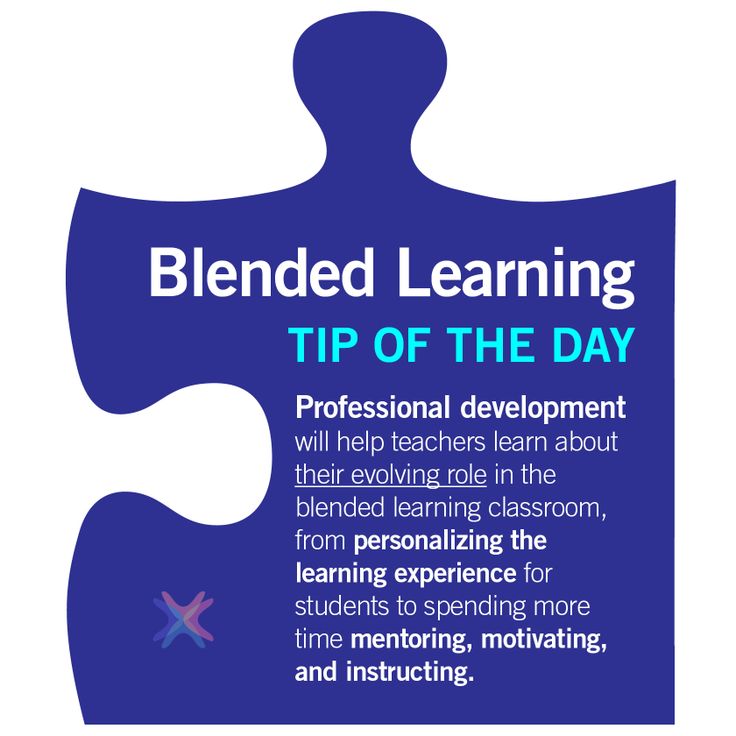
- Engage students in online instruction, often through video instruction, with flexible face-to-face support in the classroom.
- Try station rotation with online learning stations set up in the classroom.
- Project-based online learning can culminate in classroom discussions and enhanced activities.
- Support computer lab instruction with in-person instruction.
- In-class digital learning response systems enable teachers to respond to student work in real time.
- Through online coursework completion with video recordings, teachers can effectively evaluate student performance remotely.
Some instructors may guide a classroom of students sitting at computers or using tablets through the assignments they’ll complete on their devices. Other blended learning educators may teach a lesson in person, then send an assignment online, which students complete and submit digitally. In some classrooms, teachers upload lectures online for students to watch at home; back in class, students complete exercises based on the lecture, with the teacher’s supervision.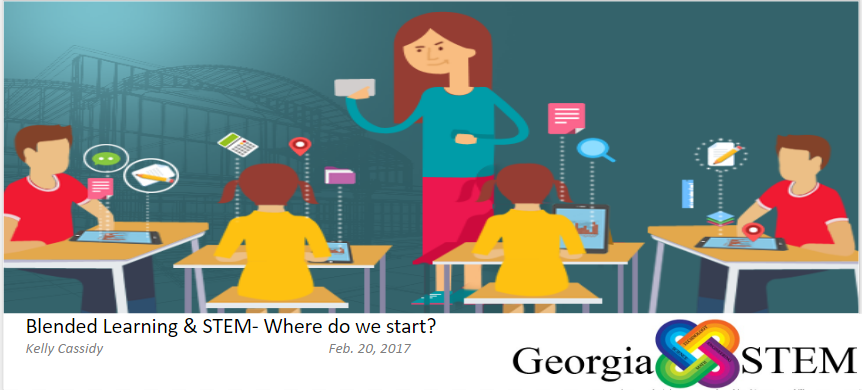
As you can see, blended learning takes endless forms and can be customized for any learning method. What you choose to pursue in your own classroom will depend in part on the technology available at your school and the devices your students have access to at home.
Who Benefits From Blended Learning?
Blended learning benefits both students and teachers. Because all students live in a technology-driven world, blended learning can be helpful to every student. Mobile access means teachers can easily schedule assignments, score student submissions, and track student progress through an online teacher management hub, day or night. Blended learning helps teachers stay organized and connect in more meaningful ways with their students. Blended learning is also flexible: blended learning methods can be integrated into almost any classroom.
How Do I Get Started with Blended Learning?
- Think about what type of blended learning method you want to use.
 Blended learning requires complementary online and in-person learning.
Blended learning requires complementary online and in-person learning. - Ensure that all your students have the technology they’ll need. If students don’t have access to computers or mobile devices at home, consider bringing technology into the classroom.
- Make sure students know how to use the technology required. Set up sample lessons in the classroom so you can supervise. If you’re using blended learning at home, provide guidance.
- Test one method first to gauge its effectiveness. As your students have different learning styles, they also have varying levels of experience with technology. Experiment with your methods to see what resonates with your students.
Bring Blended Learning to Your Students
Raz-Plus delivers a personalized blended learning approach to literacy with printable, projectable, and digital leveled books and resources for PreK-5 students and teachers. Learn more about how Raz-Plus supports blended learning or start a complimentary trial with your students today!
Learn MoreFree Trial
Six Reasons Why Blended Learning Is Becoming a Trend
In the past decade, technology-driven learning is adopted by organizations to support different learning requirements and varied audiences.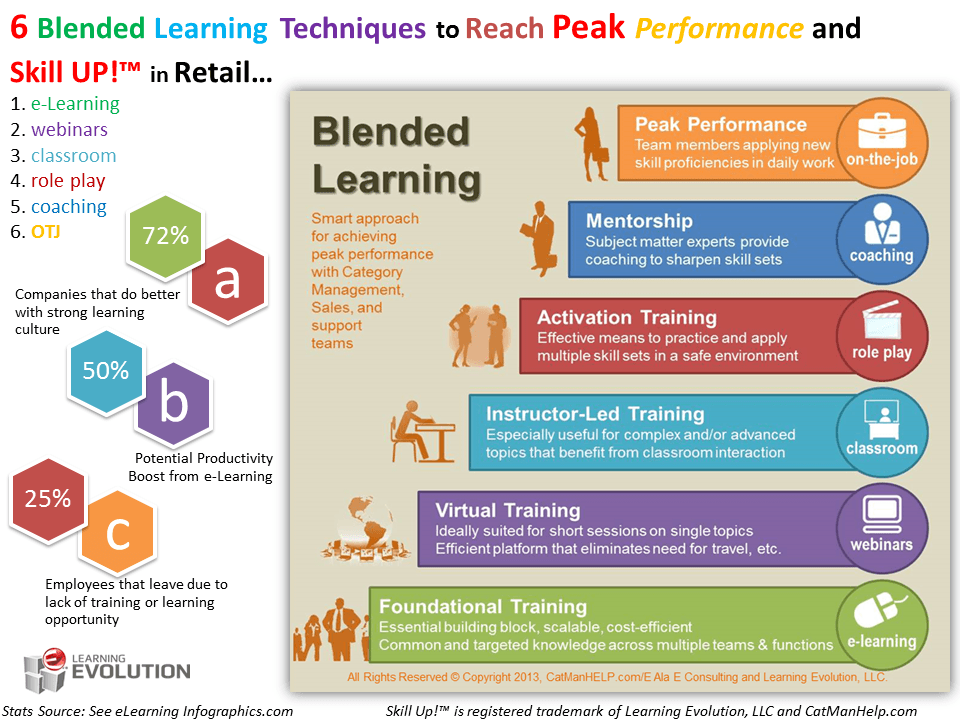 The “classroom-only” approach is transforming and online training is no more limited by distance and cost.
The “classroom-only” approach is transforming and online training is no more limited by distance and cost.
Although most businesses are not fully abandoning the conventional modes to favor online learning, blended learning is emerging as the preferred route. To ensure that corporate learners have access to the right skills and knowledge to meet organizational goals, companies are choosing blended learning because they realize that plain, non-interactive online or face-to-face training sessions don’t work anymore.
While every method has its advantages and disadvantages, blended learning outweighs other learning methods by making instruction delivery effective and result oriented right from the start.
The perfect blended learning program includes web-based training supported by human touch and media. It optimizes the achievement of learning objectives with the application of appropriate learning technologies to match the personal learning style. It refers to an education program that combines teaching methods of the traditional classroom and online learning.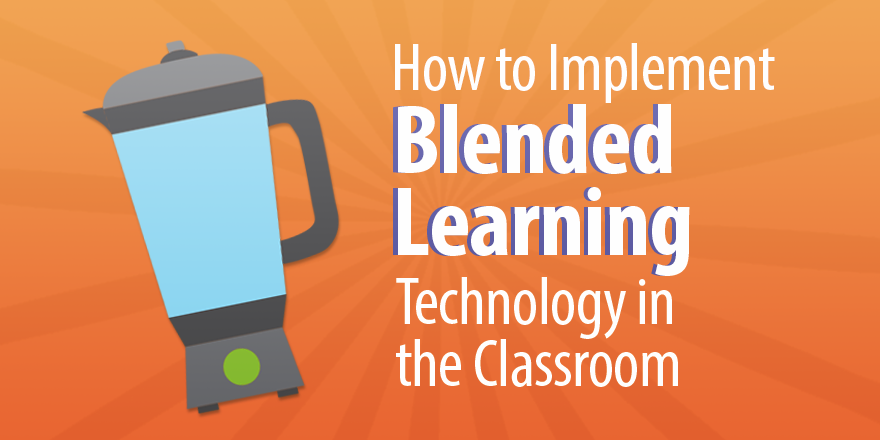 Traditional face-to-face learning is combined with methods of eLearning so that learners can reach their full potential. Every learner has different needs and learning styles, so with this education program, they have greater flexibility of learning at their own pace.
Traditional face-to-face learning is combined with methods of eLearning so that learners can reach their full potential. Every learner has different needs and learning styles, so with this education program, they have greater flexibility of learning at their own pace.
This learning approach works best for organizations, which is why it has become a buzzword in the business world. Creating a blended learning approach demands time because organizations need to identify the “right” content for online, in-person training along with timings for virtual classrooms and in-person sessions.
Whether you are teaching students or training employees, blended learning works because it can make your teaching more effective.
Here are some of the key reasons why a blended learning approach is widely adopted by learning managers and chief learning officers and is becoming a trend.
1.Boosts learner’s efficiencyWith blended learning, learning managers can provide learners with instant access to their learning materials wherever they are and whenever they need them. This is because blended learning relies partly on technology, and all the learning materials are accessible online. Due to that ease of access, learners can learn at their own pace and acquire the necessary knowledge and skills in the way that best fits their individual learning styles.
This is because blended learning relies partly on technology, and all the learning materials are accessible online. Due to that ease of access, learners can learn at their own pace and acquire the necessary knowledge and skills in the way that best fits their individual learning styles.
That kind of learning is much more efficient because learners can get more done in less time, so they can complete their education or training programs more quickly. More importantly, they can complete them more effectively because self-paced learning takes the stress out of the equation.
2.Builds engagementOne of the biggest challenges for learning managers is engaging the students and keeping them interested in the learning materials. Why? Their attention spans are short and they have higher targets to achieve.
In some instances, businesses may have a limited window of availability to enable workers from across the company to collaborate in a classroom setting for training.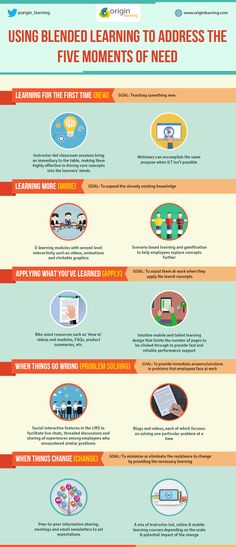 For instance, organizations operating off-shore rigs can’t spare crews for weeks or months to attend training.
For instance, organizations operating off-shore rigs can’t spare crews for weeks or months to attend training.
In such a scenario, effective blended learning is the best way forward. Wondering how? Off-shore rig operators can take part in conventional distance or eLearning initiatives. Then to build engagement, the course moderators can set a series of shared targets for the learners to accomplish.
To further the engagement process and provide opportunities for assessment, consultation sessions about these shared goals and projects can then be held with the course moderators, in person or virtually.
3.Better communicationWith blended learning, you can easily update your learners on new announcements, assignments, test results, and anything else regarding your course.
Not only is this beneficial to students, but it is also vital for businesses (especially when they have remote workers) because good and effective communication is crucial for a seamless workflow and overall organizational success. With improved communication, stronger relationships are built, which is why blended learning has started to play a huge role in corporate training.
With improved communication, stronger relationships are built, which is why blended learning has started to play a huge role in corporate training.
Collaboration is one of the key factors necessary for effective learning. Blended learning enables the course participants to work together, engage in discussions, and provide useful feedback to one another, which undoubtedly leads to improvement and higher engagement.
Dynamic online discussions and peer feedback can significantly improve learners’ knowledge and skills, especially when it comes to the workplace. Everyone is motivated to actively participate, which leads to much better learning outcomes.
5.Keeping track of learners’ progressTracking the progress of your learners is important but the traditional methods of learning don’t exactly make it easy for you to see how the course participants are performing before you actually assess them. Blended learning enables you to keep track of your learners’ progress at any given time so that you can better understand their strengths and weaknesses without fail.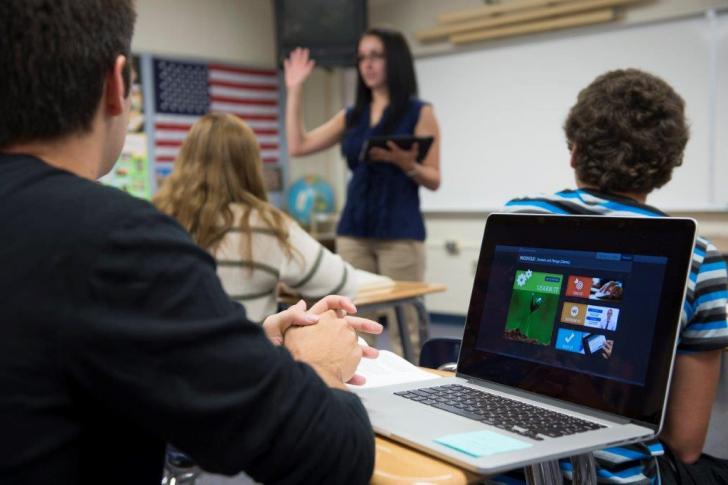
With blended learning software, corporate trainers will be able to view reports of online tests and identify areas where learners need help, so that they can help them improve and reach their full potential.
6.Enhancing teaching effortsBecause every learner’s needs are different and every learner follows a unique learning style, it is important to try to meet everyone’s needs so your course is effective. You may encounter learners who will benefit more from reading text accompanied with presentations and others who will understand the topics better after watching relevant videos.
With blended learning, incorporating different learning styles become possible—for example, you can take advantage of PowerPoint presentations, images, audio files, or video files. This is one of the key reasons why blended learning is becoming increasingly popular.
Blended learning brings a series of benefits for corporate trainers and it is worth giving it a try. With blended learning, trainers are better positioned to bridge the knowledge gap and help learners reach their maximum potential.
With blended learning, trainers are better positioned to bridge the knowledge gap and help learners reach their maximum potential.
Summing up
To improve information retention, engagement, and teaching, blended learning is more important than ever, irrespective of the industry. A good blend of learning formats goes a long way in offering efficient training to your workforce, curtailing costs, and extending the training accessibility.
- Author’s bio
- Kamy Anderson is an ed-tech enthusiast with a passion for writing on emerging technologies in the areas of corporate training and education. He is an expert in learning management systems and eLearning authoring tools, currently associated with ProProfs.
principles and methods for effective implementation
Blended learning is a combination of traditional forms of classroom learning with elements of e-learning, which uses special information technologies such as computer graphics, audio and video, interactive elements etc.
The learning process in blended learning is a sequence of phases of traditional and e-learning that alternate over time. An example of such an alternation is shown in Figure [2]:
Stages in the RWD Technologies blended learning system
Blended learning principles
- Sequence. To obtain the effect, consistency in teaching is important: first, the student must feel the material himself, then receive theoretical knowledge from the teacher and only then apply it in practice. In many ways, this principle intersects with the “flipped class” model.
- Visibility. Thanks to modern e-learning tools, you can create a knowledge base that the student will always have at hand. Unlike the classical model of learning, with blended learning, the student has access to methodological materials - video tutorials, books or simulators.
- Practical application. Practical lessons are obligatory for assimilation of the theory.
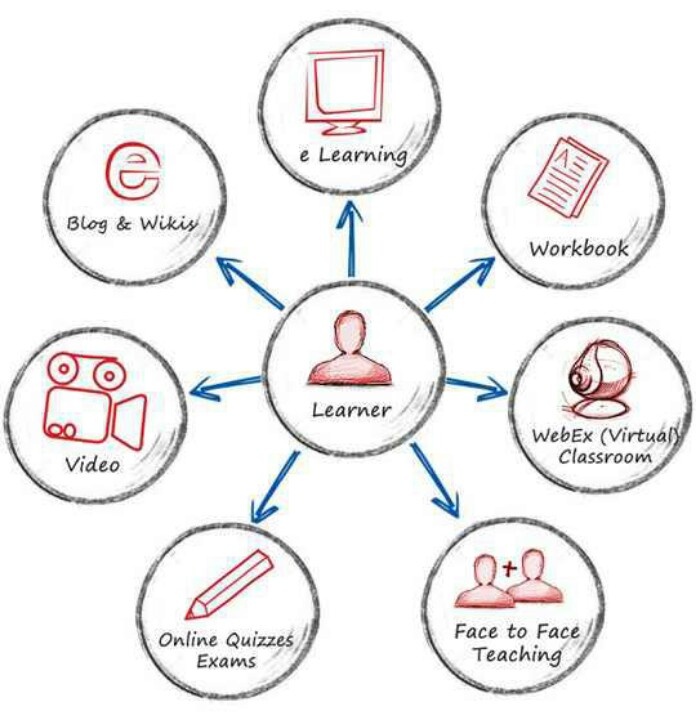
- Continuity. Blended learning is partly based on the principles of microlearning. Due to the availability of the material, the student can always go to the educational portal and get a "new portion" of the material.
- Support. In the distance learning system, a student can always ask a teacher a question and get an answer quickly, without waiting for the next full-time lesson.
The emergence and development of blended learning
There are several reasons for the transition from classical to blended learning. In higher education institutions, this is primarily due to the widespread trend at the end of the 20th century towards the optimization of business processes.
In the university educational process, the most ineffective and at the same time the most disliked by teachers types of work were the first to be optimized:
- face-to-face consultations: students often come with questions that they did not try to solve on their own.
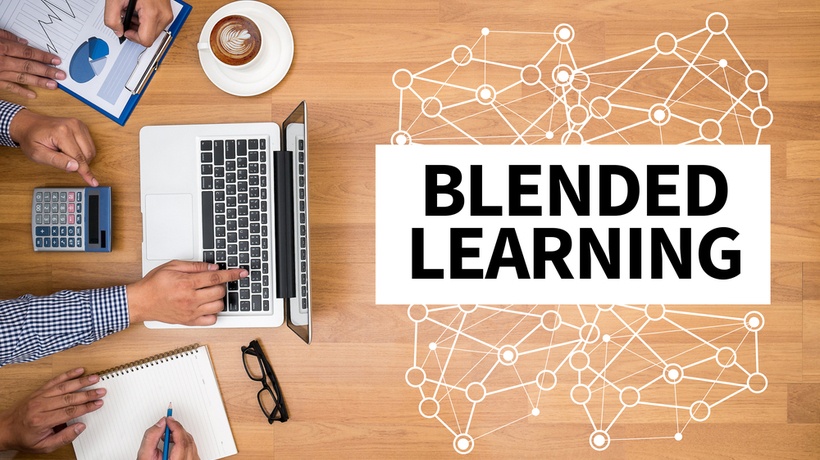 Methods for tracking student independent work in modern blended learning systems allow teachers to accept questions only from those who have conscientiously worked independently;
Methods for tracking student independent work in modern blended learning systems allow teachers to accept questions only from those who have conscientiously worked independently; - verification of control tasks (in blended learning, verification can be automatically performed by testing systems).
Advances in information technology have themselves contributed to the development of blended learning, primarily through the ability to share information via the Internet. Questions for exams, samples of project assignments, study materials can simply be posted on the university intranet or sent to students by e-mail.
Also contributing to the development of blended learning is research in the field of information processing in the brain, which has become very popular in recent years due to the development of robotics. Thus, after the scientific publications of Professor Suzanne Dikelman in 2008-2010, indirectly indicating the important role of sleep in the process of remembering information, American university libraries promptly revised their attitude towards students dozing over books and began to create special rooms for short sleep.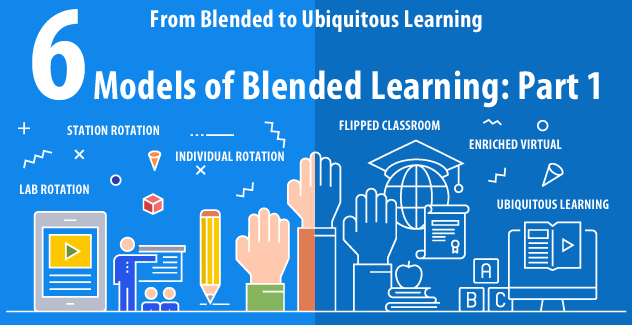
In 2014, direct evidence of this hypothesis was obtained. New York University professor Wenbiao Gan observed changes in the rat brain that occur during sleep: as it turned out, it is during sleep that new neuron connections are formed that are responsible for remembering the information received before sleep.
Commissioned by the US Federal Department of Education, Stanford University experts analyzed more than a thousand empirical studies that compared traditional, online and blended learning [3]. The results of the analysis allowed the authors to assert that in the period from 1996 to 2008, online learning did not have a significant advantage over traditional forms of learning. However, blended learning has proven to be significantly more effective than learning entirely online. This study significantly strengthened the position of blended learning and gave even more momentum to its development.
The above factors have led to the emergence of a separate sector in the field of e-learning with its own range of tasks and specialists in the creation and use of blended learning systems:
Specialization of activities in the BL ITyStudio system
The main task of LMS for blended learning
Obviously, the effectiveness of blended learning primarily depends on the correct setting of e-learning goals and on the ability to achieve these goals with the help of a specific LMS.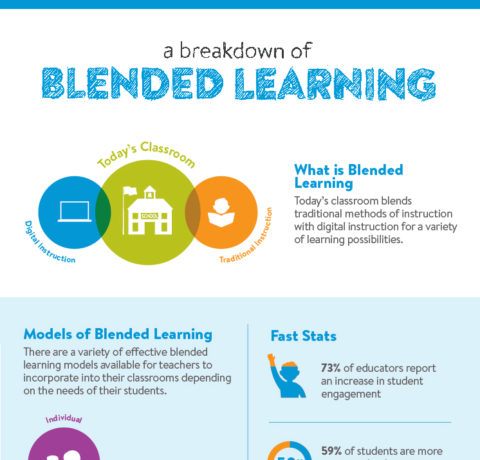 Clearly set goals can be based on learning theory. However, the number of such theories is so large that it can significantly complicate the process.
Clearly set goals can be based on learning theory. However, the number of such theories is so large that it can significantly complicate the process.
Of course, with the accumulation of knowledge about the work of the brain, the number of alternative theories will decrease. In the meantime, the most popular among teachers and developers of LMS is the behavioral (behavioral) theory of learning, in which the student is expected to have a clearly defined reaction to a particular situation, and in the event that it deviates from the “norm”, the student is given additional conditions (reinforcement ), which should lead to the expected result. Despite almost a century of successful development of this technology, it has many critics (suffice it to recall how many copies were broken in discussions about the Unified State Examination), who pointed out the difficulty of creating tests that check not so much the presence of facts, definitions and rules in the student’s memory, but the ability to build on their basis a plan for solving the proposed problem.
Within the framework of blended learning, this contradiction is resolved simply: in the phase of e-learning, a knowledge test is taken out, leaving the teacher with more interesting work for him to measure the level of the student's creative potential. In order to fully implement the main formula of the S-R-P behavioral theory (Situation → Response → Reinforcement) in the e-learning phase, a “Reinforcement” must be added to each test of the phase, consisting of “Situations”, as well as rules for its provision in case of unsatisfactory results testing (i.e. "Reactions").
It is important to start with the development of tests, and then move on to the creation of the learning materials themselves. With this approach, already at the very beginning of the development of the e-learning phase, it will be clearly defined what the trainee should know after passing it. This will allow you to build the educational material in the most effective way.
Thus, the creation of Situation→Reaction→Reinforcement modules is the main task of LMS within blended learning.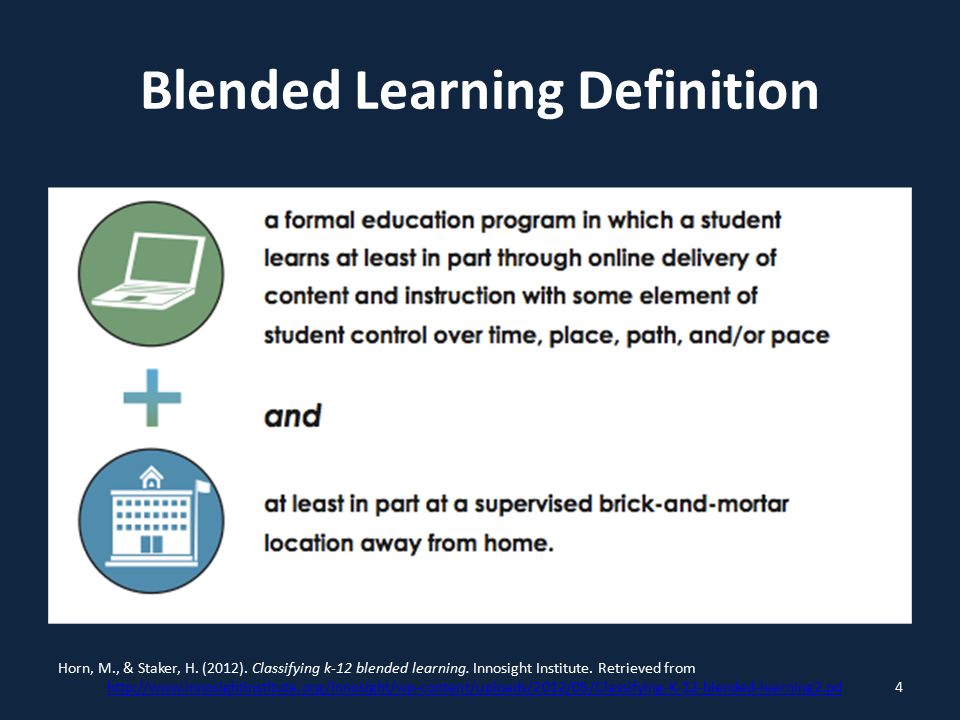
How the main task of LMS is solved in iSpring
Creating an eLearning course with iSpring does not require the command shown in the figure at all; the effort of one teacher is enough. If he already has ready-made presentations, audio and video, they can be uploaded to the iSpring Suite course creation tool with one click. From individual materials, you can easily assemble a ready-made electronic course and place it in the LMS.
To create tests, there is a tool iSpring QuizMaker, which allows you to create audio and video questions, add links, images and formulas to both questions and answer options. Thus, with iSpring QuizMaker, you can create full-fledged Situation→Reaction→Reinforcement modules.
23 built-in question types provide a wide variety of test presentations. For a single question or the entire test, you can set up multimedia and text messages that carry background or "backup" information.
The testing process can be controlled using custom scripts that specify:
- branch by question;
- branching by group of questions;
- slide branching;
- branch by response.

The finished test can be published in Flash format for passing on a computer, and without installing a flash player, or in HTML5 format for posting on a website or viewing on mobile devices.
A PowerPoint presentation can serve as the basis for the instruction and support materials for the test. When converting these materials to Flash, iSpring provides excellent support for all PowerPoint effects: animations, transition effects, SmartArt shapes, and even trigger animations and hyperlinks. Full support for trigger animations is a unique feature of iSpring products. In addition, LMS iSpring Online saves detailed statistics on the passage of each student's training modules.
Watch a selection of blended learning videos.
The use of blended and flipped learning methods in one of the Moscow schools:
Professor Natalia Lubomirskaya analyzes the experience of introducing blended learning in Russia and abroad:
List of sources:
- Larry Bielawski David Metcalf Blended eLearning: Integrating Knowledge, Performance, Support, and Online Learning, 2003 by HRD Press, Inc.
- Means, B., Toyama, Y., Murphy, R., Bakia, M., & Jones, K. (2010, September). Evaluation of Evidence-Based Practices in Online Learning: A Meta-Analysis and Review of Online Learning Studies.
- . Gosudarev On the issue of e-learning terminology PERSON AND EDUCATION № 1 (42) 2015, pp.180-183.
Organize a complete distance learning cycle quickly and cost-effectively. Download courses, form groups of students and get detailed learning statistics.
Learn more about iSpring Online →
14-day trial
What is blended learning and how do I start it? Teacher Tips - I'm a Teacher
Outside of quarantine, most of all, everyone wants to meet, communicate, exchange energy. Lessons also want to be held in the classroom. But distance learning at school is not going anywhere - it has become an integral part of the educational process. In the new reality, not all children can go to classes: some schools are again quarantined, others are switching to online learning for several days a week. One of the most effective ways to prepare for full-fledged distance learning is blended learning at school, from which you can smoothly transition to studying in a completely remote format.
But distance learning at school is not going anywhere - it has become an integral part of the educational process. In the new reality, not all children can go to classes: some schools are again quarantined, others are switching to online learning for several days a week. One of the most effective ways to prepare for full-fledged distance learning is blended learning at school, from which you can smoothly transition to studying in a completely remote format.
What is blended learning
Blended or hybrid learning is an educational approach that combines traditional supervised lessons with remote lessons where the student controls the pace of learning. In face-to-face classes, children learn to communicate, form patterns of thinking and behavior, and in the course of self-study, they develop planning and control skills, learn to manage their time and look for information. Blended learning technology combines the advantages of face-to-face and distance learning at school and compensates for their disadvantages.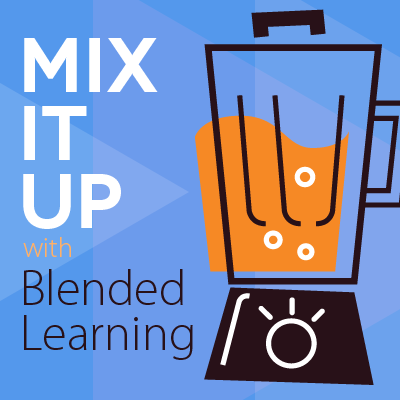
In total, there are more than 40 blended learning models that can be used to build lessons, but not all of them are equally effective. Here are some basic models of blended learning :
1. Flipped classroom , when the teacher gives students material for self-study at home, and in a face-to-face lesson (or remote lesson), the children, together with the teacher, discuss what they have learned and reinforce the material in practice.
2. Station rotation . The students in the lesson are divided into three groups and move around the “stations”. For example, some students work at an online learning station; others work in groups; the third group communicates directly with the teacher in person or remotely.
3. Laboratory rotation . A blended learning model in which part of the classes take place in regular classes, but for one lesson the children go to a computer class (laboratory), where they work on computers or tablets, deepening and consolidating the knowledge gained in the lessons.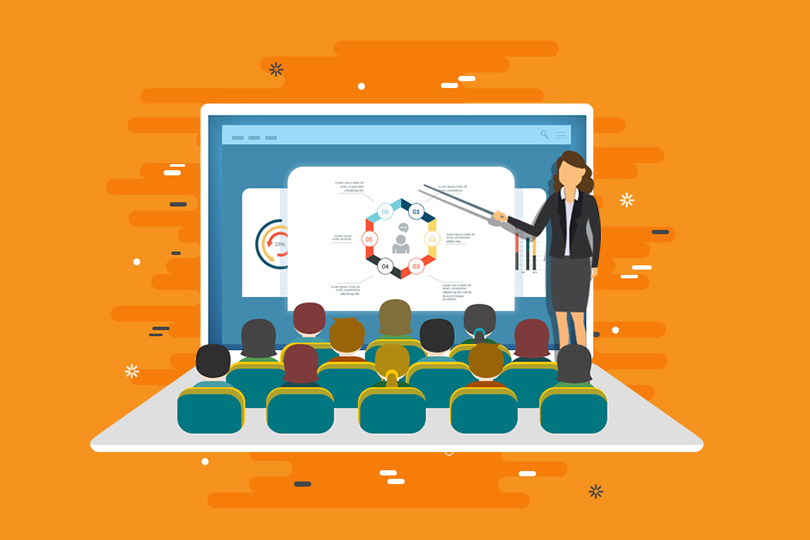
4. In a flexible blended learning model, students work on computers in a large central classroom. Along its perimeter there are several rooms and scientific laboratories for group work and brainstorming. In the socialization zone, children are placed on sofas or ottomans and continue to study.
Tips for organizing blended learning
Choosing a blended learning model, you need to consider organizational issues . Here are some tips for transitioning to partially distance learning in your school:
1. Schedule your in-person and remote lessons so students and parents know when to join video conferences, when to turn in assignments, and when to come to class. The schedule can be made publicly available using online services such as Google Calendar or Google Sheets.
2. Gather in advance all the necessary tools and teaching materials for the implementation of blended learning. Make sure you know how to work with Zoom and Skype, how to display documents on the screen, live on Instagram and Facebook, and use educational platforms.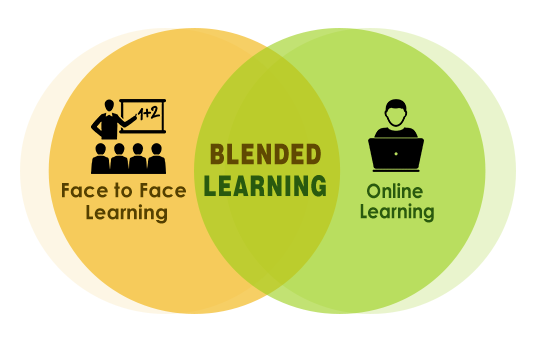 Test the first remote lesson on colleagues or friends. Before the lesson, open all the necessary tabs, check the charge level of the devices and prepare means of communication in case of force majeure.
Test the first remote lesson on colleagues or friends. Before the lesson, open all the necessary tabs, check the charge level of the devices and prepare means of communication in case of force majeure.
3. Plan your lessons and study week. Once you've chosen the blended learning model you'll be following, plan your class schedule for the week ahead. Decide which topics the children will go through on their own, and which need to be explained right away. Write lesson scenarios with an indication of the approximate time that each task will take.
4. When choosing a learning format, be guided by the age of the students. The older the children, the more they can learn on their own. In elementary school, it is important to comply with the requirements for safe computer use and ensure that the time children work online as part of distance learning does not exceed the SanPin norms.
5. For group work both in person and remotely, divide the children in advance, give a task, set a deadline for its completion and explain what result you expect. Set a time and choose a format for discussing the results. For group work in a remote format, online whiteboards are suitable, on which several people can write at the same time, or session rooms in Zoom, when the conference is divided into separate rooms for discussion.
Set a time and choose a format for discussing the results. For group work in a remote format, online whiteboards are suitable, on which several people can write at the same time, or session rooms in Zoom, when the conference is divided into separate rooms for discussion.
Why is blended learning relevant?
1. It meets the needs of children
Blended learning is a tribute to reality. Life online and offline are no longer isolated from each other, and now every second teenager and only every fifth adult lives in a mixed reality. According to a study by experts from the Yandex.Textbook platform, every second teenager believes that they live equally in the real and virtual worlds, do not see the difference between them and constantly switch between them depending on the tasks. Due to the coronavirus pandemic and lockdowns, the transition to mixed reality has moved forward, and traditional forms of learning are no longer enough.
2. Blended learning can be implemented remotely
In this case, there are no classes in the classroom, children interact with the teacher using computer technology. Such distance learning at school combines synchronous and asynchronous forms - real-time classes under the control of the teacher and independent work with information. In practice, it looks like this: you alternate webinars and video conferences with recorded lessons and assignments on online platforms.
3. It saves the teacher's time
Blended learning optimizes the learning process. Firstly, each model of blended learning involves independent work online, and children are given a chance to learn how to find information and process it themselves. Students ask fewer questions they haven't tried to solve themselves, and this saves the teacher's time. Secondly, children perform many tests on educational platforms, and the teacher receives data on the results without checking notebooks. This frees up time for other important learning matters.
This frees up time for other important learning matters.
4. Children learn to be independent
Each blended learning model includes independent work on the computer. Students learn to search for information, plan time for self-study and take responsibility for the results of their work.
5. You focus on students with all types of perception of information
According to the type of perception, people are divided into auditory, visual and kinesthetic. Someone will easily learn the material after listening to a lecture, someone needs to be obligated to take notes, and someone needs a visual. In blended learning at school, children are more likely to learn the topic - you can chat with the teacher, watch a video lecture, solve a test on an online platform. All these types of work are in every model of blended learning. In addition, the speed of assimilation of information is different for everyone - it is more convenient for students to study the material at their own pace.